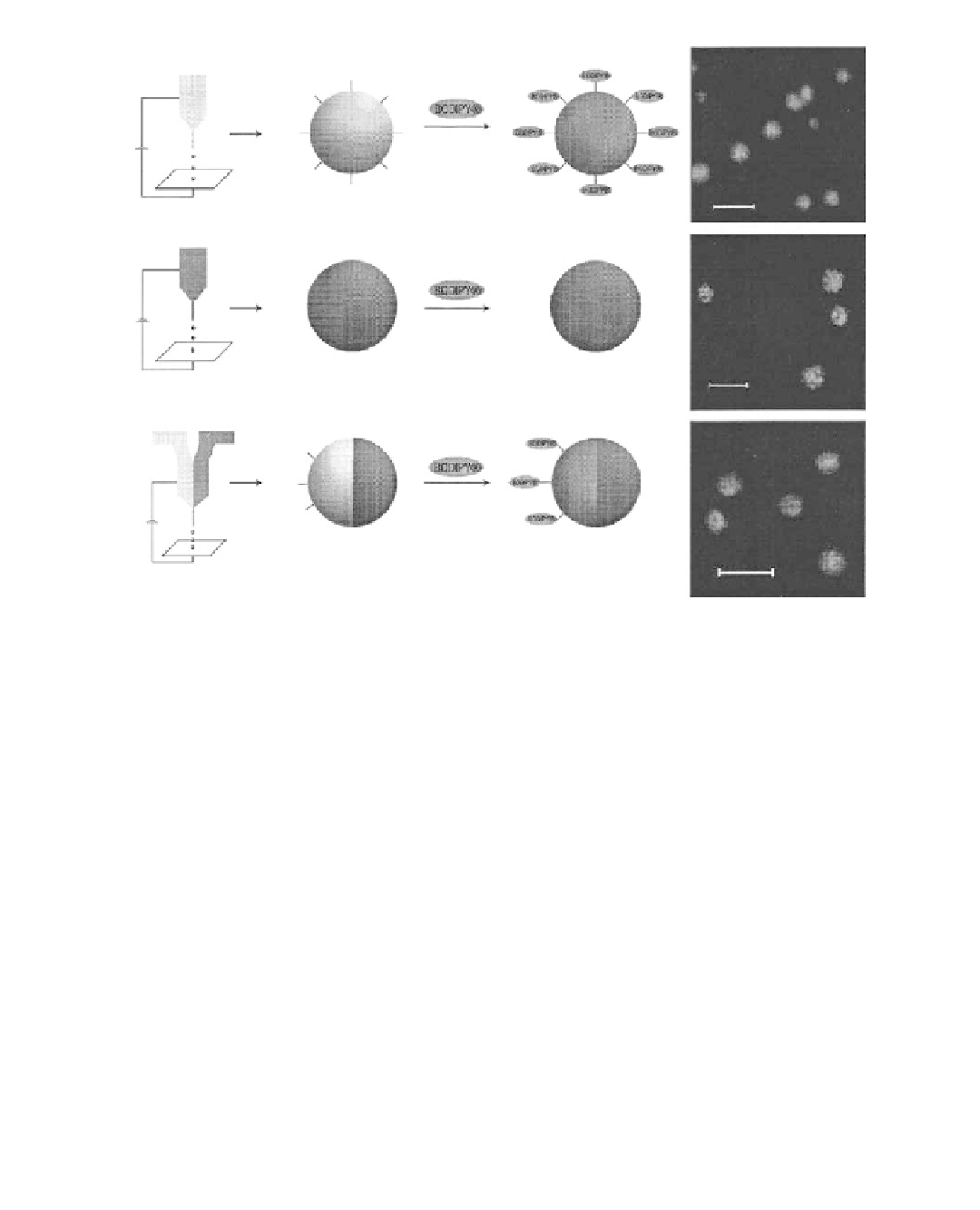Biomedical Engineering Reference
In-Depth Information
(a)
Step 1
Step 2
Liquid A
flow
NH
2
NH
2
NH
2
NH
2
NH
2
NH
2
NH
2
NH
2
Liquid B
flow
(b)
Liquid A
flow
Liquid B
flow
(c)
NH
2
NH
2
NH
2
FIGURE 11.17
Illustration of selective modifi cation of particles prepared by electrospraying. All scale
bars—2 µm. (Reprinted from Roh, K.H., Martin, D.C., and Lahann, J.,
Nat. Mater.
, 4, 759, 2005. © Nature
Publishing Group. With permission.)
fl uorescence, which indicated effi cient binding of the ligand throughout the particle. Figure 11.17b
shows the nanocolloids loaded with a rhodamine-dextran and modifi ed with BODIPY. From the
confocal microscopy image, no fl uorescence associated with the BODIPY ligands was observed,
revealing unspecifi c binding of the ligands and the red fl uorescence caused by the rhodamine-dextran
was found throughout the reference particles. Finally, biphasic nanocolloids with an amino-dextran
in the fi rst phase and a rhodamine-dextran in the second phase were prepared using electrospraying.
After reacting with the BODIPY ligand, the resulting micrographs in Figure 11.17c confi rmed the
selective binding of the BODIPY-only ligand to the amino-dextran-containing phase. The fact that
the spatial distribution of matter can be controlled at nanometer scales will enable particles to act
as selective carriers for independent ingredients, such as molecular probes or drugs. By selective
chemical modifi cation, the electrosprayed particles will be transformed into biphasic particles with
distinct surface properties. These particles can be designed as multicomponent carriers for targeted
drug delivery through molecular recognition.
Xie et al. prepared biodegradable polymeric particles from several tens of microns to hundreds
of nanometers using electrospraying [61]. The drug-delivery carriers fabricated by electrospraying
were applied in a sustained local delivery of an anticancer drug paclitaxel to treat C6 glioma. The
biodegradable polymers used as the drug matrix were PLGA, poly(d,l-lactide) (PDLA), poly(l-lactide)
(PLLA), and PCL. The experimental setup is shown in Figure 11.18. A potential difference was
created between a nozzle and a ring by applying a high voltage on the nozzle and a low voltage on
the ring. The precursor containing the dissolved polymer and drug was pumped through the nozzle
at a controlled rate. Polymeric particles with controllable morphologies such as spheres, doughnut

